Growing Cucumbers at Home doesn’t have to be a daunting task! Imagine biting into a crisp, refreshing cucumber you nurtured from a tiny seed, right in your own backyard. Sounds idyllic, doesn’t it? For centuries, cucumbers have been a staple in gardens worldwide, dating back to ancient India. They’ve been prized not only for their delicious taste but also for their cooling properties and versatility in culinary dishes.
But let’s be honest, sometimes getting those cucumbers to thrive can feel like a real challenge. Pests, diseases, and just plain finicky plants can leave you feeling defeated. That’s where these DIY tricks and hacks come in! I’m here to share some simple, effective strategies that will help you unlock the secrets to a bountiful cucumber harvest.
Why do you need these tricks? Because store-bought cucumbers simply can’t compare to the flavor and satisfaction of homegrown ones. Plus, you’ll know exactly what went into growing them – no mystery chemicals or questionable practices. So, get ready to roll up your sleeves and discover how easy and rewarding growing cucumbers at home can truly be. Let’s get started!
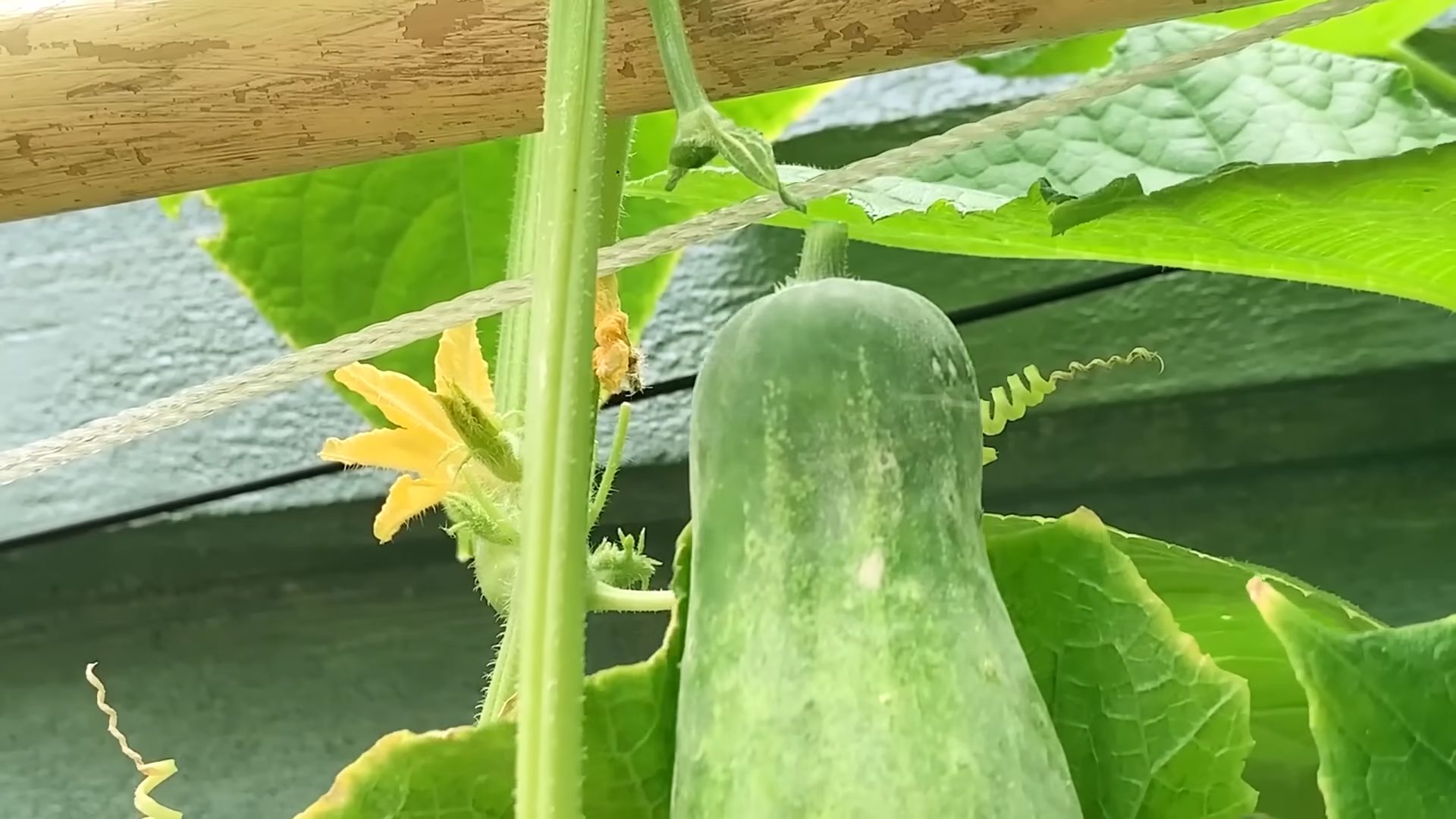
Growing Cucumbers at Home: A Beginner’s Guide
Hey there, fellow gardening enthusiasts! I’m so excited to share my experiences and tips on growing cucumbers right in your own backyard (or even on your balcony!). Cucumbers are incredibly rewarding to grow – nothing beats the taste of a freshly picked, crisp cucumber straight from the vine. Plus, they’re surprisingly easy to cultivate once you get the hang of it. Let’s dive in!
Choosing Your Cucumber Variety
Before we get our hands dirty, it’s crucial to pick the right cucumber variety for your needs and space. There are two main types: slicing cucumbers and pickling cucumbers.
* **Slicing Cucumbers:** These are your classic, long, and smooth-skinned cucumbers perfect for salads, sandwiches, and snacking. Some popular varieties include ‘Marketmore 76’, ‘Straight Eight’, and ‘English Cucumbers’ (which are often seedless).
* **Pickling Cucumbers:** These are shorter, stubbier, and often have bumpy skin. They’re ideal for making pickles, of course! Great options are ‘National Pickling’, ‘Boston Pickling’, and ‘Bush Pickle’.
Consider these factors when choosing:
* **Space:** Bush varieties are more compact and suitable for containers or smaller gardens. Vining varieties need more space and a trellis to climb.
* **Climate:** Some varieties are more heat-tolerant or disease-resistant than others. Check your local climate and choose accordingly.
* **Intended Use:** Are you planning on making pickles, salads, or both?
I personally love growing ‘Spacemaster’ cucumbers because they are compact bush variety that produces a lot of fruit.
Preparing for Planting
Cucumbers are warm-weather crops, so timing is key. They are very sensitive to frost.
* **Timing:** Wait until the danger of frost has passed and the soil has warmed up to at least 60°F (15°C). This is usually late spring or early summer.
* **Location:** Choose a sunny spot that gets at least 6-8 hours of direct sunlight per day.
* **Soil:** Cucumbers need well-draining soil that is rich in organic matter. Amend your soil with compost or well-rotted manure before planting.
* **pH:** The ideal soil pH for cucumbers is between 6.0 and 7.0.
Starting Seeds Indoors (Optional)
Starting seeds indoors gives you a head start on the growing season, especially if you live in a cooler climate.
1. **Sow Seeds:** About 3-4 weeks before the last expected frost, sow cucumber seeds in peat pots or seed trays filled with seed-starting mix. Plant the seeds about ½ inch deep.
2. **Provide Warmth:** Keep the soil consistently moist and warm (around 70-80°F or 21-27°C). A heat mat can be helpful.
3. **Provide Light:** Once the seedlings emerge, provide them with plenty of light. A grow light is ideal, but a sunny windowsill can also work.
4. **Harden Off:** Before transplanting the seedlings outdoors, gradually acclimate them to outdoor conditions over a period of 7-10 days. This process is called “hardening off.” Start by placing them outside for a few hours each day in a sheltered location, gradually increasing the amount of time they spend outdoors.
Planting Cucumbers
Whether you started seeds indoors or are planting directly in the garden, the planting process is similar.
1. **Prepare the Soil:** Dig holes that are slightly larger than the root ball of your seedlings (if transplanting) or about 1 inch deep (if direct sowing). Space the holes according to the variety you’re growing. Bush varieties can be planted closer together (about 18-24 inches apart), while vining varieties need more space (about 3-4 feet apart).
2. **Plant the Seedlings or Seeds:** Gently remove the seedlings from their pots and place them in the holes. If direct sowing, plant 2-3 seeds per hole.
3. **Backfill and Water:** Fill the holes with soil and gently firm the soil around the plants. Water thoroughly.
4. **Mulch:** Apply a layer of mulch around the plants to help retain moisture, suppress weeds, and regulate soil temperature. Straw, wood chips, or shredded leaves are all good options.
Providing Support (For Vining Varieties)
Vining cucumbers need a trellis or other support to climb. This helps to keep the fruits off the ground, improves air circulation, and makes harvesting easier.
1. **Choose a Trellis:** There are many different types of trellises you can use, including A-frame trellises, wire trellises, and even simple stakes.
2. **Install the Trellis:** Install the trellis near the plants soon after planting. Make sure it’s sturdy enough to support the weight of the mature vines and fruits.
3. **Train the Vines:** As the vines grow, gently guide them onto the trellis and tie them loosely with twine or plant ties.
I’ve found that using cattle panels bent into an arch makes a fantastic and sturdy trellis for my cucumbers.
Caring for Your Cucumber Plants
Once your cucumber plants are established, it’s important to provide them with proper care to ensure a bountiful harvest.
* **Watering:** Cucumbers need consistent moisture, especially during hot weather. Water deeply and regularly, aiming for about 1 inch of water per week. Avoid overhead watering, as this can lead to fungal diseases. Drip irrigation or soaker hoses are ideal.
* **Fertilizing:** Feed your cucumber plants with a balanced fertilizer every 2-3 weeks. Look for a fertilizer that is high in phosphorus and potassium, which are important for fruit development. You can also use compost tea or fish emulsion.
* **Weeding:** Keep the area around your cucumber plants free of weeds. Weeds compete with the plants for nutrients and water.
* **Pest and Disease Control:** Keep an eye out for common cucumber pests and diseases, such as aphids, cucumber beetles, squash bugs, powdery mildew, and downy mildew. Take action promptly if you notice any problems. Insecticidal soap, neem oil, and copper fungicide can be effective treatments.
Pollination
Cucumbers need to be pollinated in order to produce fruit. Most cucumber varieties are monoecious, meaning they have separate male and female flowers on the same plant. The female flowers have a small immature cucumber at the base, while the male flowers do not.
* **Attracting Pollinators:** Encourage pollinators to visit your garden by planting flowers that attract bees and other beneficial insects.
* **Hand Pollination (If Necessary):** If you’re not seeing many pollinators, you can hand-pollinate your cucumbers. Use a small paintbrush to transfer pollen from the male flowers to the female flowers. Do this in the morning, when the pollen is fresh.
Harvesting Cucumbers
The time it takes for cucumbers to mature depends on the variety, but most are ready to harvest about 50-70 days after planting.
* **Harvest When Ready:** Harvest cucumbers when they are the desired size and color. Check the seed packet or plant tag for specific information on when to harvest your variety.
* **Cut, Don’t Pull:** Use a sharp knife or pruning shears to cut the cucumbers from the vine. Pulling them can damage the plant.
* **Harvest Regularly:** Harvest cucumbers regularly to encourage the plant to produce more fruit. Overripe cucumbers can become bitter and seedy.
I usually harvest my cucumbers when they are about 6-8 inches long for slicing and 3-4 inches long for pickling.
Troubleshooting
Even with the best care, you may encounter some problems when growing cucumbers. Here are a few common issues and how to address them:
* **Yellowing Leaves:** This can be caused by overwatering, underwatering, nutrient deficiencies, or disease. Check the soil moisture and adjust your watering accordingly. Fertilize the plants with a balanced fertilizer. If you suspect disease, treat with an appropriate fungicide.
* **Bitter Cucumbers:** This can be caused by stress, such as heat, drought, or inconsistent watering. Provide consistent moisture and shade the plants during the hottest part of the day.
* **Misshapen Cucumbers:** This can be caused by poor pollination or nutrient deficiencies. Hand-pollinate the flowers if necessary and fertilize the plants with a balanced fertilizer.
* **Pest Infestations:** Treat pest infestations promptly with insecticidal soap, neem oil, or other appropriate treatments.
Enjoying Your Harvest
Now for the best part – enjoying the fruits (or rather, vegetables!) of your labor.
* **Fresh Eating:** Enjoy your cucumbers fresh in salads, sandwiches, or as a healthy snack.
* **Pickling:** Make your own homemade pickles.
* **Sharing:** Share your bounty with friends and neighbors.
Growing cucumbers at home is a rewarding experience that allows you to enjoy fresh, delicious produce all season long. With a little planning and care, you can have a thriving cucumber patch in your own backyard. Happy gardening!
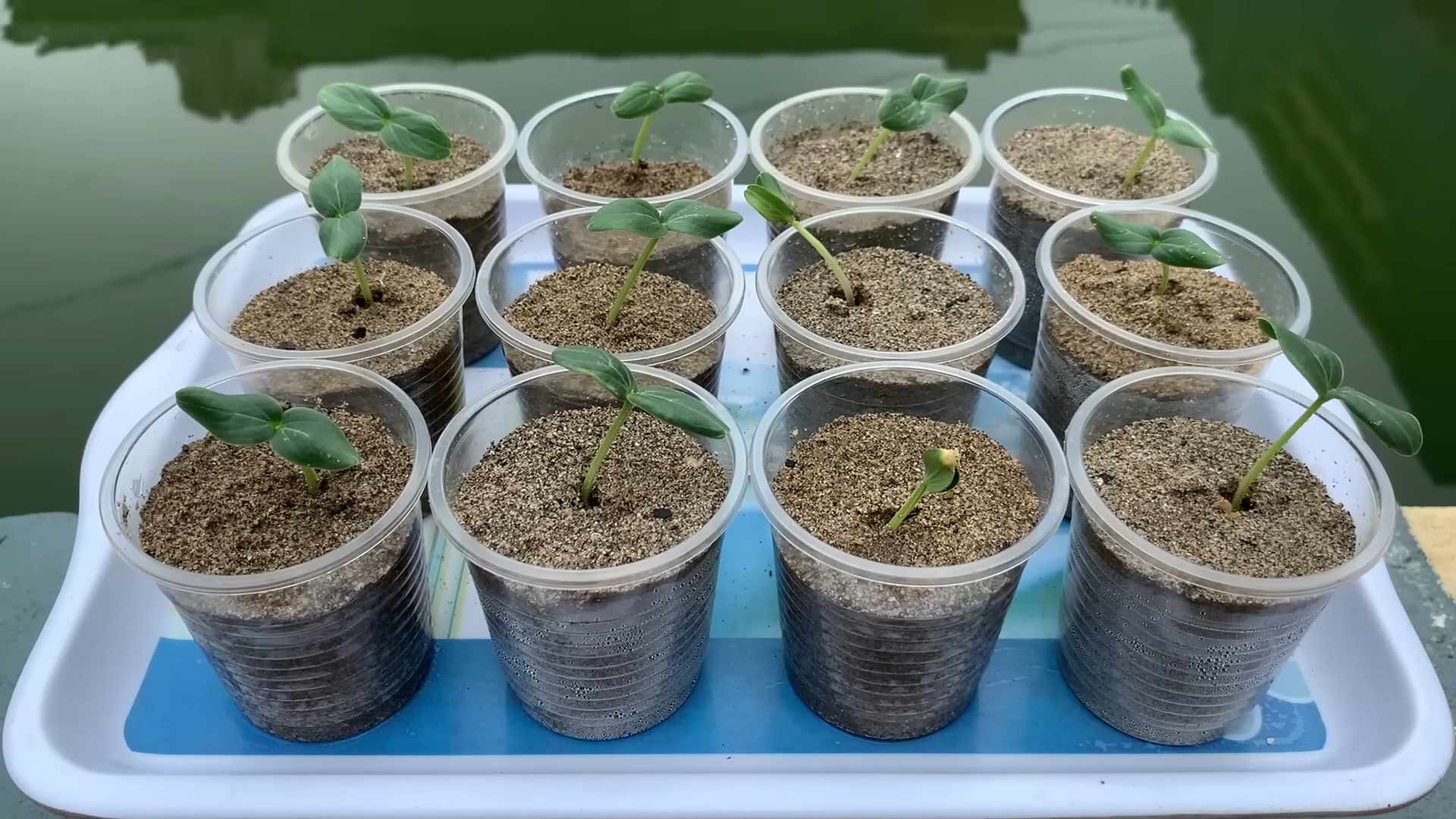
Conclusion
So, there you have it! Growing cucumbers at home is not only achievable, but it’s also incredibly rewarding. Forget those bland, waxed cucumbers from the grocery store. Imagine biting into a crisp, juicy cucumber, bursting with flavor, knowing you nurtured it from seed to harvest. This DIY trick, focusing on vertical growing and companion planting, is a game-changer for maximizing your yield and minimizing common cucumber problems.
Why is this a must-try? Because it’s efficient, space-saving, and ultimately, leads to better tasting cucumbers. Vertical growing, using trellises or cages, allows for better air circulation, reducing the risk of fungal diseases like powdery mildew. Companion planting, strategically placing beneficial plants like marigolds or nasturtiums near your cucumbers, naturally deters pests and attracts pollinators. This holistic approach to cucumber cultivation results in healthier plants and a more abundant harvest.
But don’t stop there! Experiment with different cucumber varieties. Try pickling cucumbers for homemade pickles, or slicing cucumbers for refreshing salads. Consider adding different companion plants to see what works best in your garden. Basil, dill, and oregano are all excellent choices that can enhance the flavor of your cucumbers and repel unwanted insects. You can also explore different trellising methods. A simple A-frame trellis is easy to build, while a more elaborate archway can add a touch of elegance to your garden.
The key to successful cucumber growing is observation and adaptation. Pay attention to your plants, monitor for pests and diseases, and adjust your watering and fertilizing schedule as needed. Remember, every garden is unique, and what works for one gardener may not work for another. Don’t be afraid to experiment and find what works best for you.
We are confident that by implementing these techniques, you’ll be enjoying a bountiful harvest of delicious, homegrown cucumbers in no time. This DIY trick is more than just a gardening technique; it’s an invitation to connect with nature, learn new skills, and savor the fruits (or rather, vegetables) of your labor.
Now, it’s your turn! We encourage you to try growing cucumbers at home using these methods. Share your experiences, successes, and challenges in the comments below. Let’s create a community of cucumber enthusiasts, sharing tips and tricks to help each other grow the best cucumbers possible. We can’t wait to hear about your cucumber growing adventures! Let us know what varieties you tried, what companion plants you used, and any unique challenges you faced. Your insights will be invaluable to other gardeners. Happy growing!
Frequently Asked Questions (FAQ)
What is the best time to start growing cucumbers?
The ideal time to start growing cucumbers depends on your climate. Cucumbers are warm-weather crops and are sensitive to frost. In most regions, you can start seeds indoors about 3-4 weeks before the last expected frost. Once the soil has warmed up to at least 60°F (15°C), you can transplant the seedlings outdoors. If you live in a warmer climate with a longer growing season, you can direct sow cucumber seeds directly into the garden after the last frost. Check your local weather forecasts and planting guides for specific recommendations for your area.
What kind of soil do cucumbers need?
Cucumbers thrive in well-drained, fertile soil that is rich in organic matter. The ideal soil pH for cucumbers is between 6.0 and 7.0. Before planting, amend your soil with compost, aged manure, or other organic materials to improve drainage, fertility, and water retention. If your soil is heavy clay, consider adding sand or perlite to improve drainage. A soil test can help you determine the specific nutrient needs of your soil and guide your fertilization strategy.
How often should I water my cucumber plants?
Cucumbers need consistent moisture, especially during hot weather and fruit development. Water deeply and regularly, aiming to keep the soil consistently moist but not waterlogged. A good rule of thumb is to water about 1-2 inches per week, depending on the weather and soil conditions. Use a soaker hose or drip irrigation to deliver water directly to the roots, minimizing water loss through evaporation and reducing the risk of fungal diseases. Mulching around your cucumber plants can also help retain moisture in the soil.
What are some common cucumber pests and diseases, and how can I prevent them?
Cucumbers are susceptible to several pests and diseases, including aphids, cucumber beetles, squash bugs, powdery mildew, and downy mildew. To prevent pest and disease problems, practice good garden hygiene, such as removing weeds and debris that can harbor pests and diseases. Companion planting with beneficial plants like marigolds and nasturtiums can help deter pests. Regularly inspect your plants for signs of pests or diseases and take action promptly. Insecticidal soap or neem oil can be effective for controlling aphids and other pests. For fungal diseases, ensure good air circulation by spacing your plants properly and pruning excess foliage. You can also use organic fungicides if necessary.
How do I know when my cucumbers are ready to harvest?
The time it takes for cucumbers to mature depends on the variety. Generally, cucumbers are ready to harvest about 50-70 days after planting. Check the seed packet or plant tag for specific maturity dates. Harvest cucumbers when they are the desired size and color for the variety. Pickling cucumbers are typically harvested when they are smaller and more slender, while slicing cucumbers are harvested when they are larger and more mature. The skin should be firm and smooth, and the cucumber should be easy to detach from the vine. Regular harvesting encourages continued fruit production.
Can I grow cucumbers in containers?
Yes, you can successfully grow cucumbers in containers, especially bush varieties. Choose a large container, at least 12 inches in diameter, with good drainage holes. Use a high-quality potting mix that is well-draining and rich in organic matter. Provide a trellis or support for the vines to climb. Water regularly and fertilize every 2-3 weeks with a balanced fertilizer. Place the container in a sunny location that receives at least 6-8 hours of sunlight per day.
What are some good companion plants for cucumbers?
Several plants make excellent companions for cucumbers. Marigolds and nasturtiums deter pests like aphids and cucumber beetles. Dill and basil attract beneficial insects that prey on cucumber pests. Legumes like beans and peas fix nitrogen in the soil, which benefits cucumber growth. Radishes can help repel cucumber beetles. Avoid planting cucumbers near aromatic herbs like sage, as they can inhibit cucumber growth.
How can I prevent my cucumbers from becoming bitter?
Cucumber bitterness is often caused by stress, such as inconsistent watering, high temperatures, or poor soil conditions. To prevent bitterness, ensure your cucumber plants receive consistent moisture, especially during hot weather. Mulch around the plants to retain moisture and regulate soil temperature. Choose cucumber varieties that are less prone to bitterness. Harvest cucumbers when they are young and tender, as bitterness tends to increase as cucumbers mature.
What is the best way to store harvested cucumbers?
Store harvested cucumbers in the refrigerator to keep them fresh and crisp. Wrap them loosely in plastic wrap or place them in a perforated plastic bag to prevent them from drying out. Cucumbers can typically be stored in the refrigerator for about 1-2 weeks. Avoid storing cucumbers near ethylene-producing fruits like bananas and tomatoes, as this can cause them to ripen and spoil more quickly.

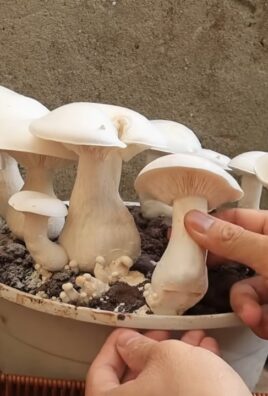
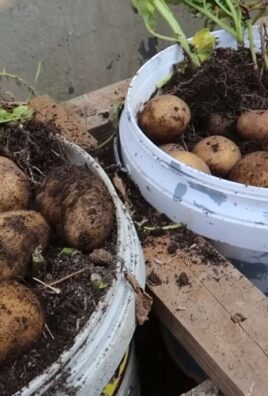
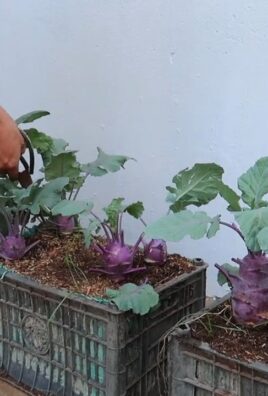
Leave a Comment